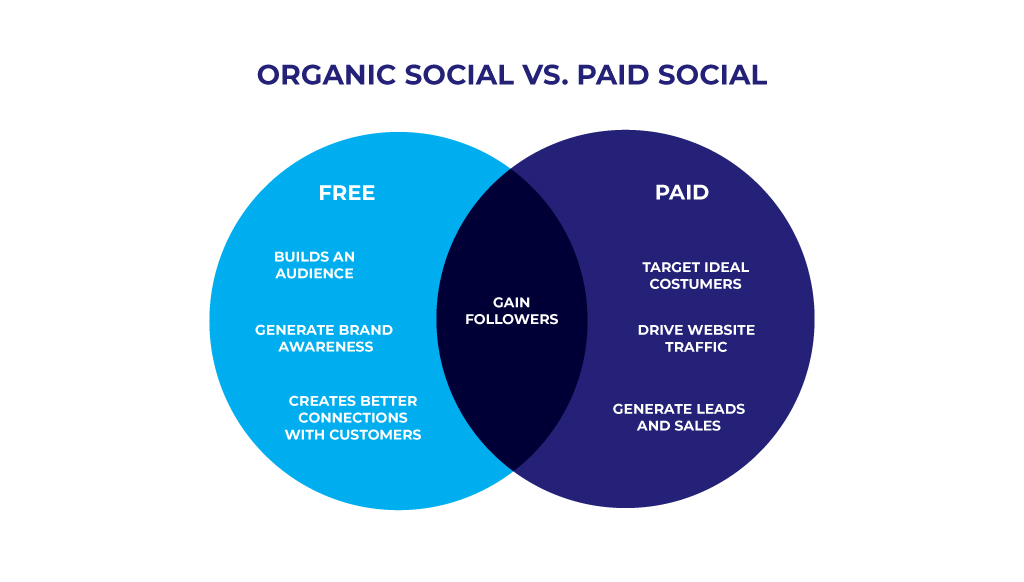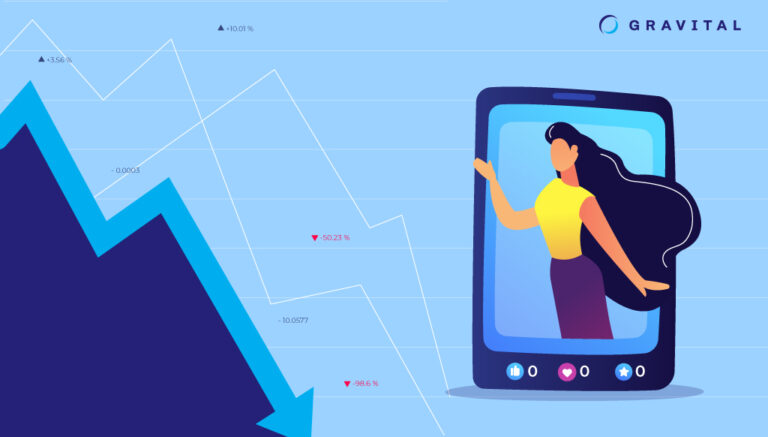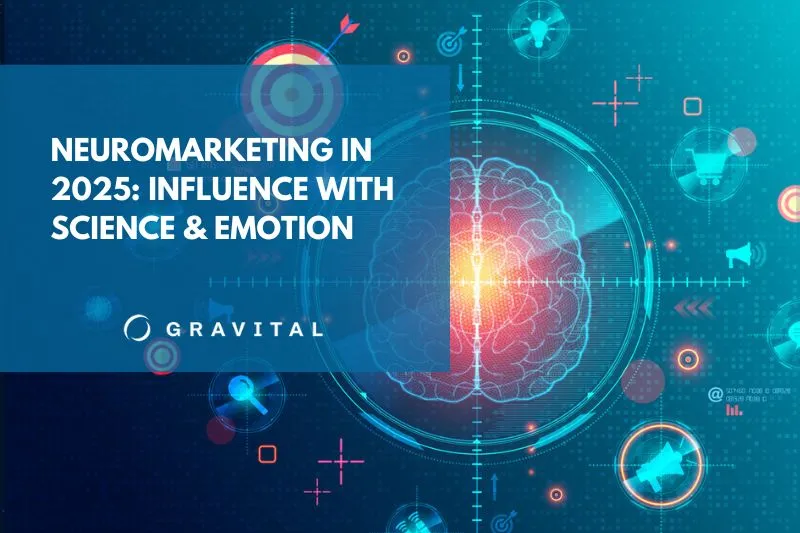Here’s What to Do.
You may have heard or read about the shrinking reach of organic social media posts. Some marketers believe that organic reach is dead, leaving brands to wonder if they should invest their time, effort and resources in a social media marketing strategy that includes organic content.
If you check the statistics, you’ll find a mixed bag. However, two trends stand out: an increase in social media ad spending and a decrease in the reach or engagement of organic content.
For example, the average organic reach (percentage of users that see a post on the platform) for Instagram in July 2022 was 13.51%, down 29% from 19% a year earlier. For Facebook, it declined from 10.43% to 8.6% during the same period. These are significant drops.
Meanwhile, social media advertising spending has been increasing. This year, it’s projected to grow 18.9% to $268.7 billion worldwide and 17% to $94.4 billion in the U.S. From 2023 to 2027, worldwide social media ad spending is expected to experience an annual growth rate of 9.4% to $384.9 billion, while U.S. spending should see an annual growth rate of 8.3% to $130.5 billion during the same period.
Most marketers, 91% plan to advertise on social media platforms in 2023, according to a report by Integral Ad Science. However, IAS’ study shows a decrease in monetization intent across platforms, except for a slight increase of 2% year-over-year for WhatsApp.
But when scrolling down their newsfeeds, are social media users more likely to click on sponsored content, or do they favor what they perceive to be authentic posts? It’s complicated.
What Is Organic Social Media?
Organic social media refers to any activity on social media platforms that occurs naturally, without anyone paying for it.
Organic social media content is any content that is freely published on social media channels, including posts, photos, videos, memes and polls, among others. This content can be seen by followers and other social media users who see them in their feeds as suggested content.
Organic content is free. And what could be more attractive to anyone seeking to promote a brand, business, product, service or idea than free publicity? No budget? No problem! Organic content also enables brands to reach and connect with their audiences directly, on a more personal level.
But–and it’s a big but–organic social media content is not exactly a free-for-all, one-size-fits-all solution. Building sufficient following in one or more social media channels takes time and effort, and, sometimes, money. More on that later.
Examples of Organic Media Content
- Status updates and stories
- How-to guides, educational content
- Testimonials, case studies
- Real-life examples of how products/services work
- Funny, entertaining content
- News-related information
Benefits of Organic Social Media Content
- Free
- Increases brand awareness
- Enables companies to better target and reach an audience
- Creates and builds connections with existing and prospective customers
- Engages target audiences with valuable, relevant content
- Allows users to share content across multiple channels
- Can be used to support a variety of causes and communities
How to Use Organic Social Media Content: 10 Free Tips!
- Identify and know your target audience inside out.
- Determine the tone and voice of your brand’s message.
- Do a good share of social media listening.
- Develop a social media marketing strategy.
- Create valuable and engaging content.
- Respond to comments, likes, reviews, etc.
- Encourage user-generated content (UGC).
- Stay active: regularly post new content.
- Focus on building a strong sense of community.
- Be consistent in your content, timing and message.
What Is Paid Social Media?
Paid social media is any activity on social media platforms that requires a payment to be published.
Paid social media content refers to advertising placed on social media channels to promote brands, products, services and messages.
Using paid content, advertisers can target precise demographics, interests and behaviors to reach their desired audience.
Common Uses of Paid Social Media Content
- Attract new followers
- Increase brand awareness
- Drive website traffic
- Generate leads and sales
- Boost organic content


The Beginning of the End of Free Publicity
Why is the once-strong reach of organic social media content getting weaker and the one of paid content getting stronger?
Blame those pesky little things called algorithms.
Who Started It?
Facebook, of course.
In 2006, Facebook created a newsfeed that allowed users to scroll through posts published by their friends and liked pages. It displayed posts in reverse chronological order, showing the newest posts first. Users complained about having to scroll down through irrelevant posts to find the ones they liked. Facebook tweaked its newsfeed, it didn’t change much.
A year later, Facebook implemented EdgeRank (adapted from Google’s PageRank), an algorithm that could order the content of a user’s newsfeed on three key principles: interactions (comments, likes, shares), type of content more likely to engage the user, and how quickly posts became irrelevant. This newsfeed prioritized relevancy instead of chronological time or popularity, ushering a new era in which users and brands would have to compete for rankings on social media platforms.
For a while, when users interacted with a brand’s post (via comments, likes, shares), it would show in the newsfeeds of those users’ friends and followers, exposing brands to new audiences and helping them gain followers and, possibly, new customers. But, once again, users complained about seeing too many irrelevant posts in their feeds. And more tweaks followed.
Eventually, Facebook developed a more powerful algorithm that examines tens of thousands of variables, evaluates users’ total activity on the platform and makes predictions about what they would like to see on their feeds.
Where Facebook Leads, Others Follow
It is said that imitation is the sincerest form of flattery, but in this case, it’s simply the best way to gain market and make money.
In 2016, Instagram implemented an algorithm to sort its newsfeeds by relevance rather than chronological order. It also introduced a new format, the story, to compete with Snapchat, a move that others have followed.
In recent years, social media platforms have developed and put into effect algorithms that prioritize authentic organic content over promotional content. For example, Facebook’s newsfeed algorithm reportedly now restricts the average visibility of non-promoted content to somewhere between 5.2% and 5.5%, meaning that one in 20 people will see posts published by pages they like or follow.
These algorithms have gotten better and better at their jobs, making it more difficult for brands to capitalize on organic content and pushing them toward paid content.


It’s Not Personal
While social media companies attempt to convince the world that they’re adjusting their algorithms to improve user satisfaction and enhance social connections, none of them are running charities.
It’s not personal. It’s business.
So there’s no point in getting depressed about the impending demise of organic content reach. At least we had a full free ride for a while, right? The point is to get better at using social media, however possible, to reach, engage and convert audiences.
Organic Social Media Reach Isn’t Dead, but It’s Heading That Way
Those heralding the death of organic reach may be jumping the gun, but only for the time being because it’s starting to look that way. In other words: prognosis negative.
But it’s not all gloom and doom. We know that each platform offers different advantages in terms of target markets, content strategy and revenue generation. So declaring all organic reach as deceased may be a bit premature. At the same time, the capabilities and benefits that paid social media offers brands is likely to exceed what they can achieve on their own through organic content.
Brands may have to reconsider paid ads as obligatory rather than supplementary in order to stand out in an increasingly crowded online marketplace. Only leading brands may be able to reach and engage enough of an audience with organic content alone. Everyone else will have to jump on the paid content bandwagon sooner than later.
Bottom Line
As ranking for organic content becomes more competitive and platforms push for paid advertising, brands should allocate a greater portion of their social media marketing budgets on paid content.
There’s Still a Place for Organic Content
While paid social media and influencer marketing become more effective at reaching audiences, there’s still a place for organic content strategies–if and when done correctly.
To use organic content successfully, brands must have a thorough understanding of several key elements:
- Buyer personas and target audiences
- How each social media channel works
- How to create valuable and engaging content
Small- and medium-sized businesses often assume they can’t afford paid content or ads and put their hopes solely on organic content. But let’s face it–engaging organic content isn’t free. Few people outside of social media marketers and content creators have the expertise to create effective organic social media content. As a result, most of the content that inexperienced brands put out there is unproductive.
Nevertheless, all brands should have some level of active organic presence on the channels that their ideal followers or buyers frequent. If nothing else, it provides legitimacy and credibility and shows an interest in connecting with customers, even if it doesn’t generate leads or sales.
Bottom Line
Organic content is still a viable way to target, reach and engage audiences, but you need to know what you’re doing, or you need to hire someone who knows.
Combining Organic and Paid Content in Social Media
You probably don’t want to hear it. After all, it’s easier to choose all or nothing than to have to juggle a little bit of this and a little bit of that.
Right now, combining organic and paid social media (in most cases) is a more effective social media marketing strategy than doing one or the other.
With the number of social media users projected to continue rising, from 4.89 billion in 2023 to 5.85 billion in 2027 worldwide, and competition ever-intensifying, brands will need all the help to reach and engage their audiences.
Here are 15 (free!) tips on how to combine organic and paid strategies to extend social media reach:
Use Organic Social Media Content to–
- Create and nurture connections and relationships with followers and customers.
- Showcase products, services, events, discounts, etc., then use paid ads to drive traffic to this content.
- Establish and boost brand legitimacy and credibility.
- Communicate your brand’s story in engaging ways.
- Offer support to existing customers.
Use Paid Social Media Content to–
- Reach a new or larger audience.
- Retarget social media users who engage with your organic posts.
- Drive conversions and increase sales.
- Boost highly engaging or shareable organic content.
- Test and track engagement with particular audiences before investing in organic content.
Bonus Tips
- Use both to enhance brand awareness.
- Use both to increase website traffic.
- Use both to advance the buyer journey.
- Track and measure engagement for both types of content.
- If you don’t know how to do any of this, hire someone who does.
Final Thought
Cheer up! Organic social media content isn’t dead–yet. You have time to reevaluate your social media marketing strategy and capitalize on a combination of organic and paid content. As usual, balance is the key.
So avoid monochromatic mindsets and approaches. The best ideas and strategies often happen in the gray.
Sources: Statista, Social Insider, Social Media Today, Marketing Dive, Integral Ad Science, HubSpot, Sprout Social, Inkspire, Social Media Examiner, HootSuite, Forbes, Search Engine Journal, Animoto.


